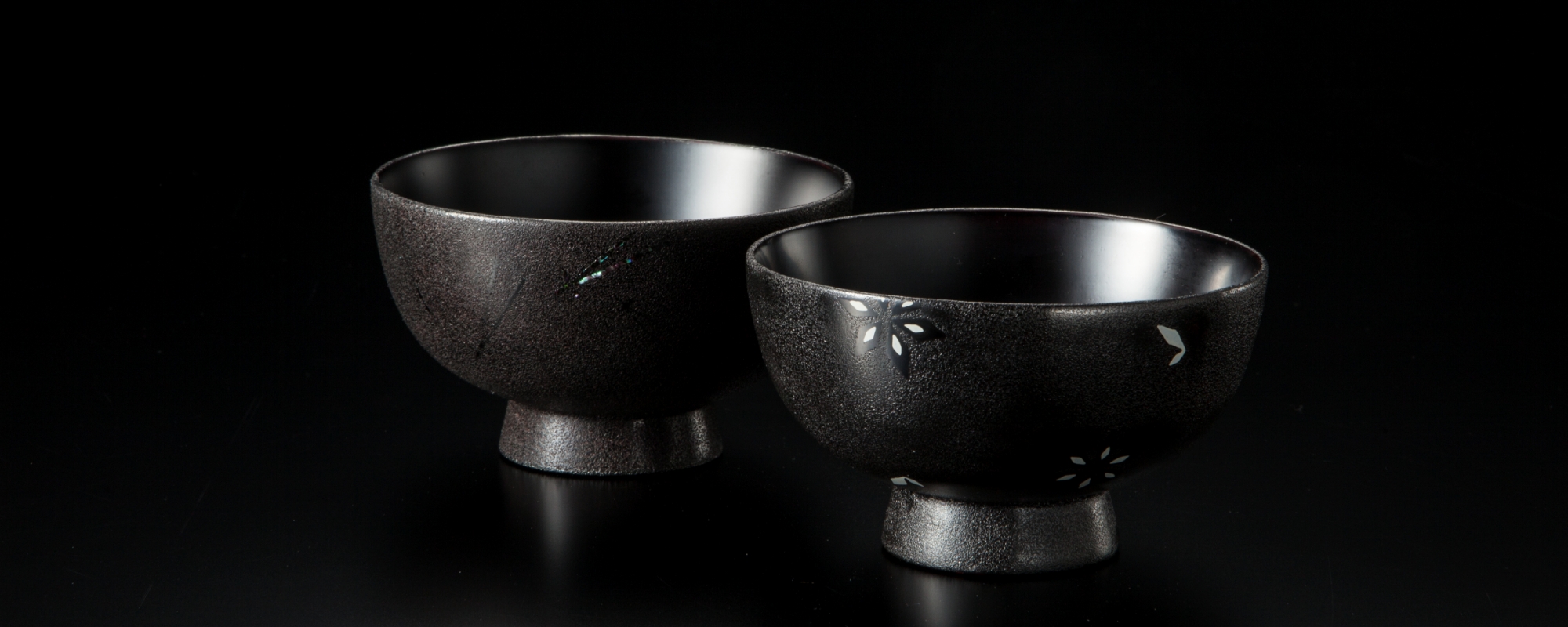Traditional Aomori Lacquerware
"Tsugaru Nuri" - 300 Years of History
Tsugaru Nuri is a traditional lacquerware made in the Tsugaru region surrounding Hirosaki in Aomori, the northernmost lacquerware producer in Japan. The history of Tsugaru Nuri can be traced back to over 300 years ago to the Edo period (1603 ~1868).
The four styles of Tsugaru Nuri crafted today are the Kara-nuri, Nanako-nuri, Monsha-nuri, and Nishiki-nuri. The lacquerware is made using a crafting technique called "togidashi kawarinuri," in which the ware is painted with lacquer and polished repeatedly, a process that involves over 40 steps, completed over the course of a few months.
Tsugaru Nuri has a graceful beauty, but is also strong and durable. As each lacquerware is crafted by hand, every piece is perfectly unique.
The Bursting Cherry Blossoms,
Spring in Tsugaru
Spring in Aomori arrives with the bloom of cherry blossoms. After the long, cold winter, the splendid blossoms announce the arrival of spring for those who have waited for the warm flowering season. Hirosaki Park, famed as the best sight of cherry blossoms in Japan, boasts 2600 cherry blossom trees of about 52 varieties including somei-yoshino cherry trees. The cherry trees bloom all at once, and shed their flowers in a span of days. The short-lived bloom brings people to appreciate and love the beauty of nature in part for its evanescence. This is at the heart of Tsugaru Nuri artisans, who have a deep love and appreciation for urushi lacquer.
The Colorful Dances
Summer in Tsugaru
The Hirosaki Neputa Festival, a fire festival with splendid colors, is the highlight of the brief Aomori summer. As the festival of the region, it has been preserved and passed on through the generations. About 80 enormous lanterns, or neputas, of various sizes parade through the city during the festival. The lanterns are made in the shape of a fan and figurines which display images inspired by historical figures from the Sangokushi, kabuki, and mythologies. The lanterns create a magical scene under the night sky with vibrant colors that elicit great excitement. The festival is a timeless treasure that lives on with the people.
The Bountiful Season
Autumn in Tsugaru
At the base of Mt. Iwaki, also known as Tsugaru Fuji, apple orchards cover the land as far as the eye can see. White apple flowers bloom in the spring, painting the landscape. The fruit plumps up through the summer, reaching harvest season with branches bent low with fruit. Aomori is the largest producer of apples in Japan and is known for their great quality. It is believed that one of the reasons for their success comes from the basic nature of the people in Tsugaru; hard-working, headstrong, and meticulous. The famous Tsugaru expression "joppari" describes the Tsugaru people as proud artisans who make no compromise in pursuit of the best quality of work.
The Fiery Spirit,
Winter in Tsugaru
The Tsugaru region has a harsh, frigid winter. The cold blistery wind from the Sea of Japan blasts through the region, occasionally causing drifting snow, fallen snow is blown by the strong winds creating blizzard-like conditions.
In spite of such a hard season, the perceptive nature of the people in Tsugaru prevails in how they appreciate their daily lives through the winter. This trait is reflected on the craftsmanship of a Tsugaru Nuri artisan, who must execute the same steps of painting, drying, and polishing with precision many times over. The bliss artisans experience when the designs of the ware begin to take shape is akin to the joy felt by the Tsugaru people when reveling in the ever-changing snowy wonderland of Aomori.
